Pozole has been around for centuries with a rich history. It was once a staple dish in Aztec culture and typically served during celebrations like weddings or the end of a victorious battle. Although its ingredients have evolved over time to meet changing tastes, one thing remains – pozole is as comforting today as it ever was! In this post we will be exploring what was pozole originally made with and how these ingredients contribute to making the deliciously unique flavor that we know and love.
Contents
What Is Pozole?
Pozole is a traditional Mexican dish that is typically made with hominy, or large corn kernels that have been boiled in an alkaline solution to soften them. The hominy is then cooked with pork shoulder and flavored with seasonings like garlic, oregano, chili peppers, cumin, bay leaves and more. It’s usually served as an entrée, but it can also be used as a side dish for other Mexican dishes.
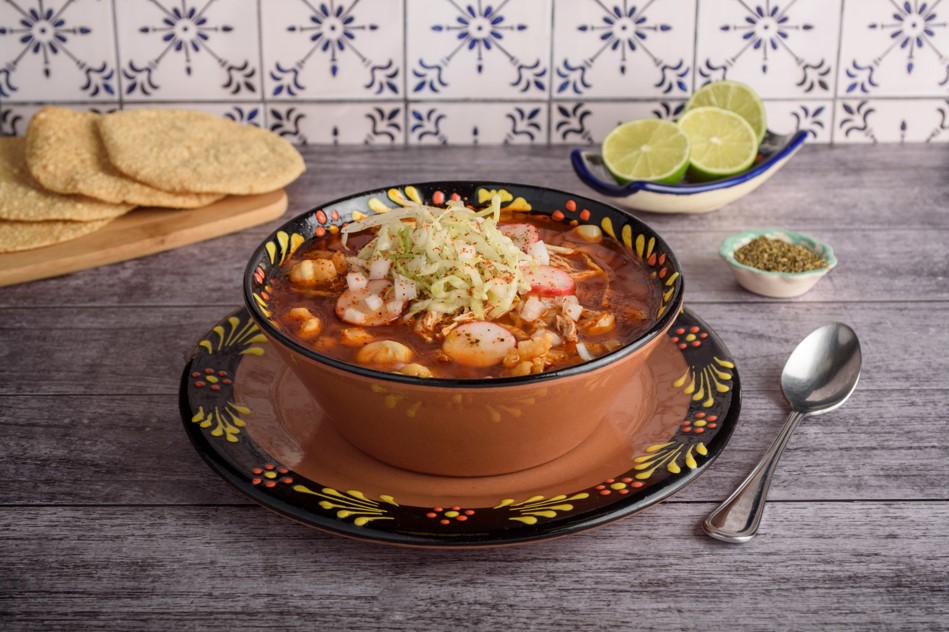
A Brief History Of Pozole
Pozole has been around since pre-Columbian times and was a staple dish among Aztec culture. It’s thought that pozole was served as part of religious ceremonies to honor the gods, and it also became popular during important events like weddings or at the end of victorious battles. The dish began to spread throughout Latin America during the colonial period when Spanish conquistadors brought ingredients such as hominy and pork to the continent. Today, chicken or pork are usually used instead of human flesh to give it the same flavor profile but without the taboo.
Before we dive into what was pozole originally made with, let’s watching this video to know more about history of pozole.
What Was Pozole Originally Made With?
The original pozole recipe was made with pork and closely-related animals like deer or rabbit. Some versions of the dish included turkey, but this was not common until recent years. The hominy served as the base of the dish, while other ingredients like vegetables and spices were added to enhance flavor. The traditional recipe also called for lard, which provided a richer, more flavorful broth that was much appreciated by those who ate it.
In recent years, pozole has evolved to include different meats such as chicken or beef. Vegetarian-friendly versions of the dish are also becoming more popular due to the increasing demand for healthier and meatless options.
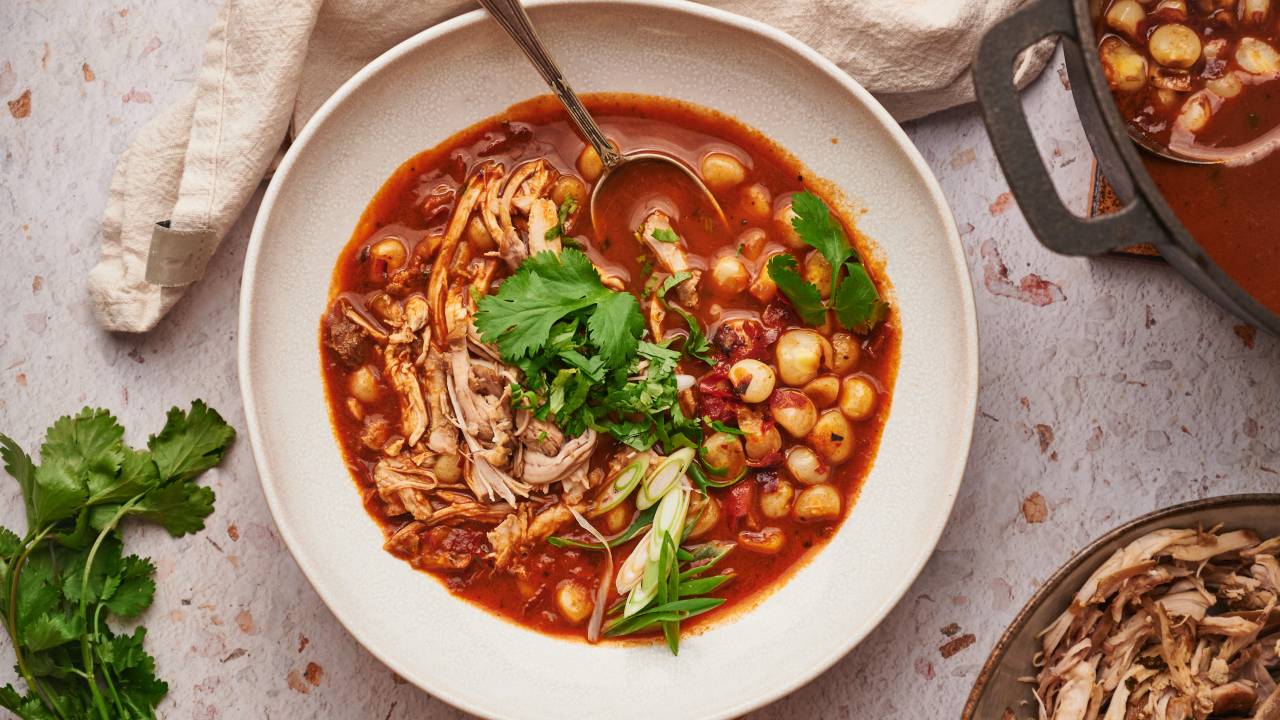
Why We Need To Know What Was Pozole Originally Made With?
Knowing what was pozole originally made with can be extremely helpful when trying to recreate the flavor profile of traditional pozole. Knowing the original ingredients, as well as their cooking times and temperature can help give cooks an idea of how much time is needed for a successful recipe. Additionally, it’s important to keep in mind which ingredients are still used in modern-day pozole recipes and which ones have been replaced. Keeping this knowledge in mind can help create the perfect balance of flavors to suit individual tastes. Ultimately, understanding what was pozole traditionally made with is essential for creating a delicious and authentic Mexican-style dish.
The Different Types Of Pozole
Today, there are three main types of pozole: white, red and green. All three versions start with hominy as the base but they are flavored differently depending on which type is being made. White pozole usually involves a tomato-based sauce and is often served with shredded lettuce, avocado and diced onions. Red pozole features a red chili-based sauce and is often garnished with shredded cheese, diced radishes, cilantro and lime wedges. Finally, green pozole is usually made with a tomatillo-based sauce and can be served with additional toppings such as cilantro, avocado, jalapeno peppers and diced onions.
How Do You Make Pozole?
Making pozole is relatively straightforward. The first step is to cook the hominy until it’s tender, then add the meats of choice and simmer for a few hours. Next, the vegetables are added along with seasonings such as garlic, oregano, chili peppers, cumin and bay leaves. Finally, garnishes such as diced avocados or diced tomatoes can be added for a pop of flavor and color. Pozole can also be topped with cheese, sour cream or other condiments for an extra layer of flavor. With just a few simple ingredients and steps, you can have a delicious pozole that’s sure to please the whole family.
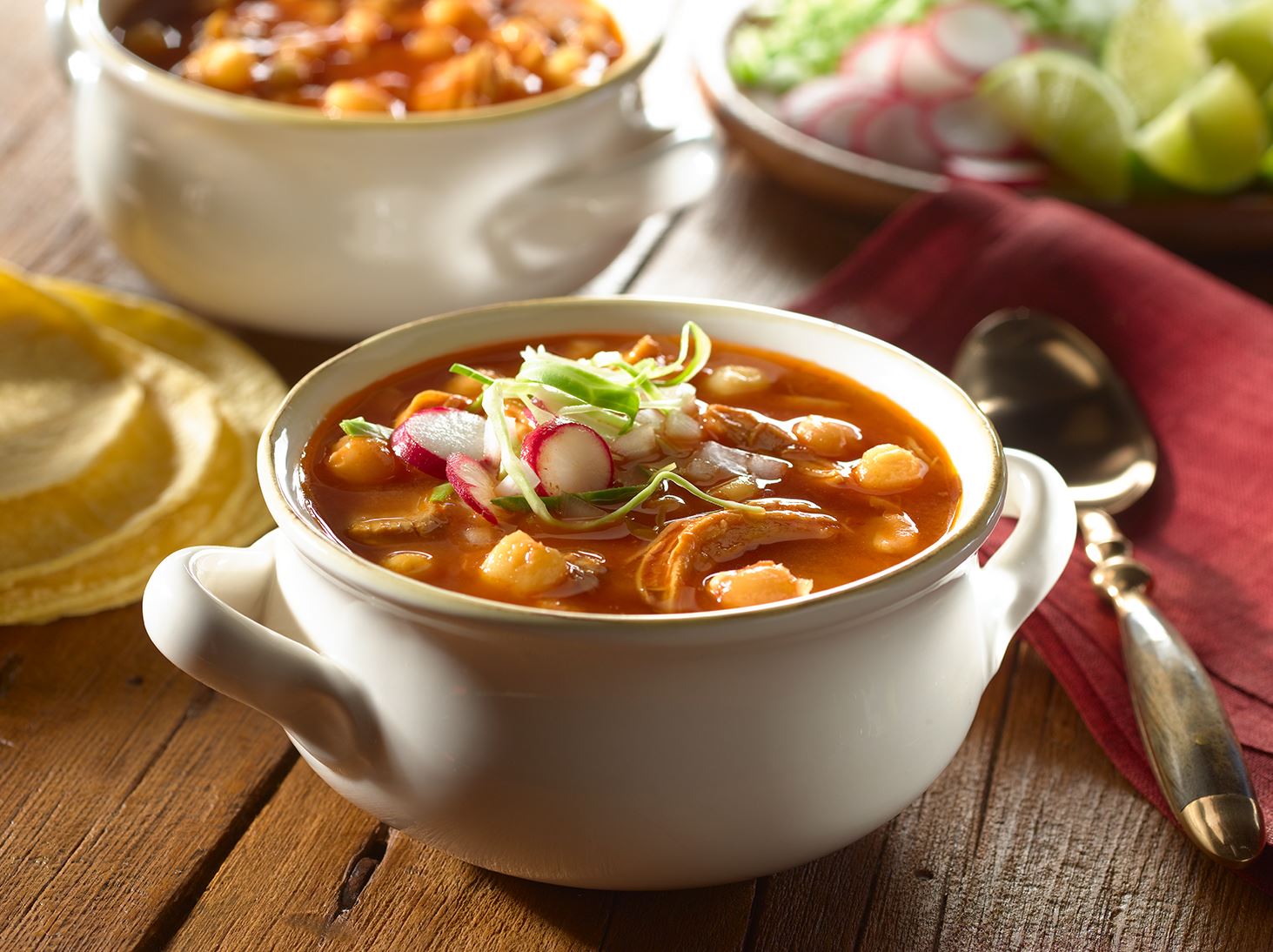
Some Best Tips For Making Pozole
Making pozole can be a great way to bring some delicious Mexican flavor into your home. Here are some tips to ensure that your pozole turns out perfect every time:
- Use quality ingredients, as this will make a big difference in the final product.
- Cook the hominy low and slow for best results.
- Don’t be afraid to experiment with different meats, vegetables and spices to find the combination that suits your taste.
- Make sure to add garnishes such as diced avocados and tomatoes at the end for a fresh pop of flavor and color.
- Take your time and enjoy the process of making pozole, as it can be just as enjoyable as eating it!
- Serve your pozole with a side dish such as Mexican rice or refried beans for a complete meal.
By following these tips, you’ll be sure to make a delicious and authentic pozole that everyone will love.
How Is Pozole Served?
Pozole is typically served as a hearty soup, but it can also be served with a side dish such as Mexican rice or refried beans. Other popular toppings for pozole include diced avocado, diced tomatoes, shredded lettuce, sour cream and cheese. Pozole can also be garnished with lime wedges, jalapeños, cilantro or even lard for an extra bit of flavor. Finally, pozole can be served with a variety of beverages such as beer, soft drinks or freshly-squeezed juices. With so many options to choose from, there’s sure to be something that everyone can enjoy!
No matter how you decide to serve it, pozole is sure to be a hit with family and friends. Its unique combination of ingredients and flavors make it a truly special dish that’s sure to have everyone coming back for more.
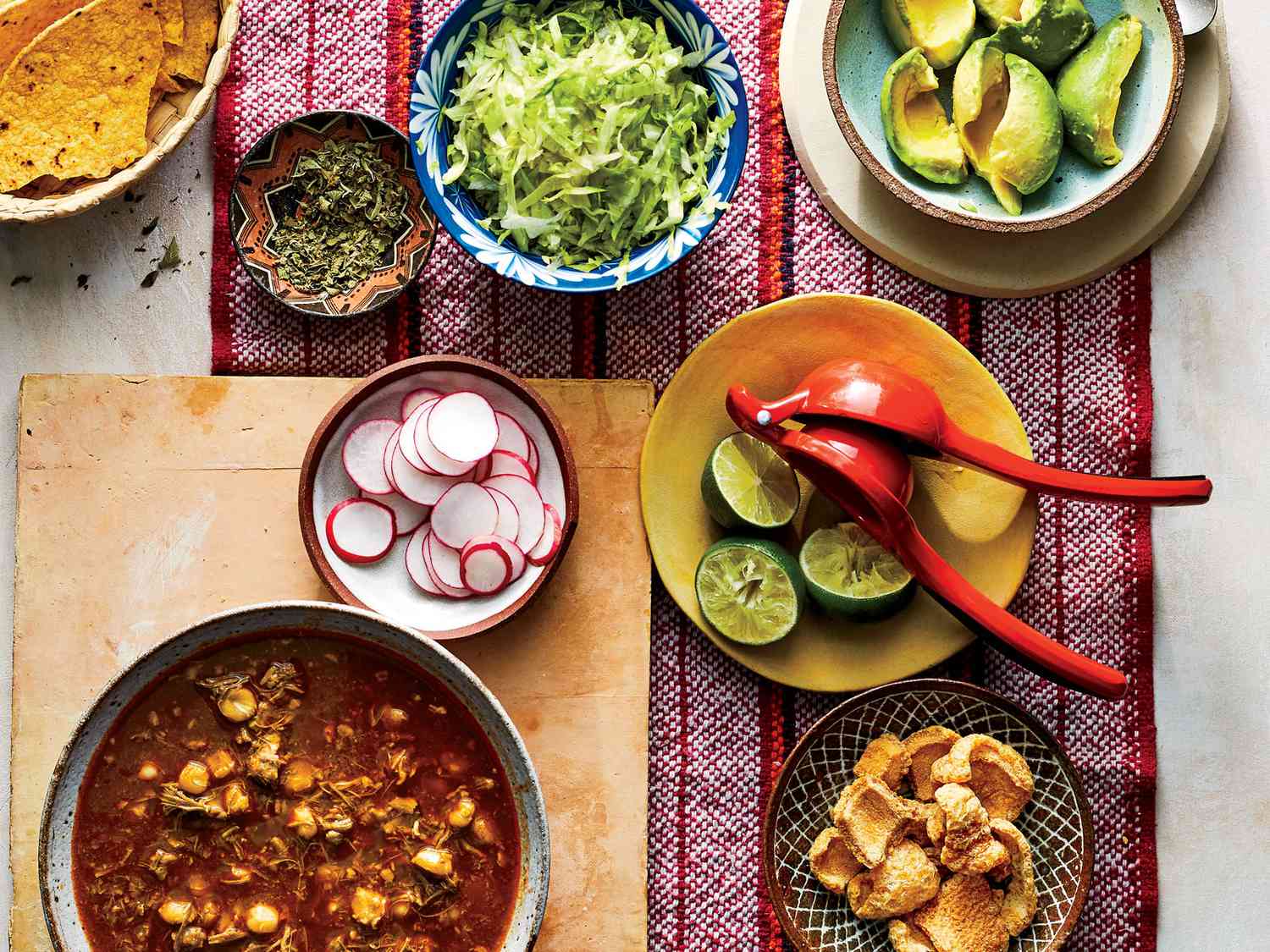
Guide To Storing Leftover Pozole Safely
Leftover pozole should be stored in an airtight container and kept in the refrigerator for up to three days. The soup can also be frozen for up to six months, although it may lose some of its flavor over time. When reheating pozole, make sure to bring it back up to a boil before serving as this will help kill off any bacteria.
It’s also important to avoid leaving pozole out for too long, as it can become a breeding ground for bacteria. To ensure that your pozole is safe to eat, make sure to store any leftovers immediately and consume them within three days of cooking. This will help keep you and your family safe from foodborne illnesses while still enjoying delicious pozole.
Recipe Of Pozole You Must To Try
This flavorful dish can be enjoyed by everyone and is sure to become a family favorite. Here is an easy pozole recipe that you must try:
Ingredients:
- 2 pounds of pork shoulder, cubed
- 1 onion, diced
- 4 cloves of garlic, minced
- 8 cups of chicken broth
- 2 tablespoons of chili powder
- 1 teaspoon oregano
- 1 teaspoon cumin
- 2 bay leaves
- 4 cups of cooked hominy
- Garnishes: diced avocados, diced tomatoes, shredded lettuce or cabbage, lime wedges, jalapeños and/or sour cream
Instructions:
- In a large pot, add the pork shoulder and onion and cook over medium-high heat until the pork is browned.
- Add the garlic, chicken broth, chili powder, oregano, cumin and bay leaves to the pot and bring to a boil.
- Reduce heat to low and simmer for 1 ½ – 2 hours or until the pork is tender.
- Add the cooked hominy to the pot and cook for an additional 15 minutes.
- Taste and adjust seasonings as desired.
- Serve with any desired garnishes, such as diced avocados, tomatoes, shredded lettuce or cabbage, lime wedges, jalapeños and/or sour cream.
This pozole recipe is sure to please the whole family with its delicious flavors and comforting texture. Pozole can be enjoyed as a soup or served alongside other dishes for a full meal. With just a few simple steps, you can have a delicious Mexican-style dish that’s sure to be a hit.
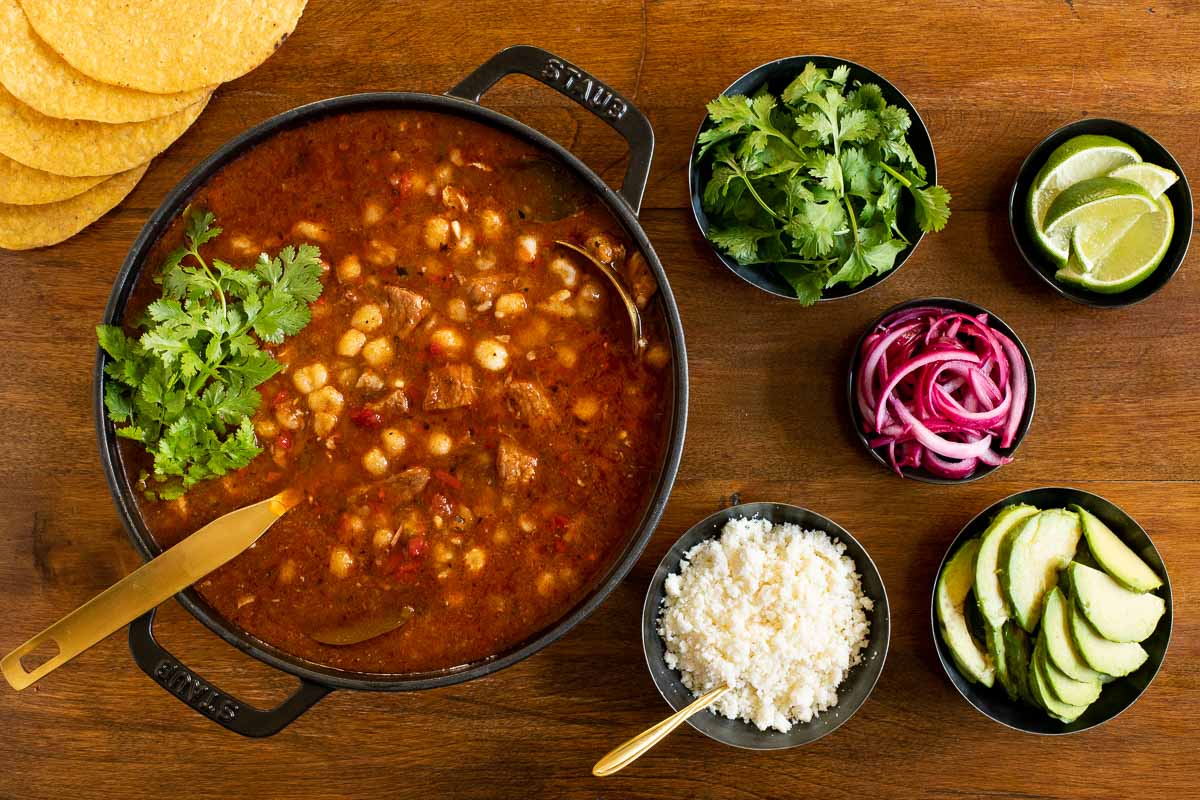
Conclusion: What Was Pozole Originally Made With?
Pozole is an ancient and traditional Mexican dish that has been around for centuries. Although the recipe has evolved over time, the main ingredients have remained intact. Knowing what was pozole originally made with is essential to creating an authentic and flavorful dish. With just a few simple ingredients and steps, cooks can have a delicious pozole that’s sure to please everyone! So next time you’re in the mood for a comforting Mexican meal, try making pozole and see just how easy it is to prepare. Thanks for reading at yongkangstreetnyc.com.
FAQs: Pozole
What is the original meat in pozole?
Discover the dark origins of pozole, a traditional dish now made with pork. Uncover the gruesome past where this Mexican delicacy was once made from the hearts of sacrificial victims. Journey through history as we explore the transformation of pozole after the ban on cannibalism.
Was pozole made of dog?
Discover the shocking truth about pozole’s secret ingredient: dog meat. While it may seem bizarre today, ancient pozole was made from the meat of war prisoners. Uncover the historical accounts that suggest this meat was sourced from the revered Mexican hairless dog, the xoloitzcuintle.
Why is pozole important to Mexican culture?
Discover the significance of pozole in Mexican culture: a sacred dish connecting generations, traditions, and spirituality. Journey back to the days of indigenous people, where corn reigned supreme. Even today, pozole remains an irreplaceable part of Mexican identity.
What does pozole taste like?
Experience the blissful flavors of pozole at La Casa de Toño. Immerse yourself in a medley of distinct tastes – from the smoky depth of the thick red chile broth to the delicate sweetness of the corn. This unforgettable culinary masterpiece is perfectly complemented by succulent pieces of pork, creating a symphony of spice and flavor.
Why is pozole traditional in Mexico?
Discover the rich history behind Mexico’s beloved pozole, a dish with deep cultural significance. Handed down from indigenous communities, this culinary treasure holds ancestral rituals within its core. Explore the sacred connection between the Aztecs, Mayans, and the principal ingredient of corn.
Is pozole junk food?
This delightful dish not only satisfies your taste buds, but it also offers a range of health benefits. Packed with nutritious ingredients, pozole can aid in weight loss, regulate blood sugar levels, and promote a healthy gut. Plus, it’s naturally gluten-free! However, it’s important to be mindful of its sodium, fat, and calorie content. To enjoy a guilt-free indulgence, opt for low sodium broths and lean cuts of meat.
Does pozole have a cow stomach?
While pozole is typically made with pork or chicken, menudo incorporates tripe, which is the chewy stomach lining of a cow and compares to sautéed calamari in texture.
Does pozole have a mushroom?
Discover the delightful flavors of Pozole Blanco, a clear broth soup that puts a unique spin on the classic green and red pozole. This vegan version features tender hominy, delectably caramelized mushrooms, and a flavorful vegetable broth. Elevate your bowl by adding sliced radishes, crunchy cabbage, and zesty lime juice. Excite your taste buds with this hearty and vibrant dish.
Is pozole made of corn?
Discover the flavorful world of pozole – a delicious and comforting stew made from simmering dried white corn kernels for hours. This traditional dish is both hearty and easy to make. Find out if corn is the key ingredient in this savory delight.
How can you describe pozole?
Discover the flavors of pozole – a hearty Mexican soup filled with tender pork or chicken, hominy, mild chile peppers, and cilantro. This traditional Christmas dish is also known for its reputation as a go-to hangover cure.
What are the grains in pozole called?
Discover the unique grains that give pozole its distinct flavor. Known as cacahuazintle, these large white grains of corn, derived from the Nahuatl word “pozolli – tlapozonalli”, will amaze you as they transform into a foamy delight when boiled.
What kind of onion for Pozole?
Unlock the key to perfecting your pozole: white onion. This delightful variety is both mild and sweet, subtly infusing your dish with a tantalizing aroma and enhancing the flavors of every ingredient.

Chef Yong Kang has over 20 years of experience cooking in the finest restaurants, and is excited to present their vision to you and all our guests. Our caring and committed staff will ensure you have a fantastic experience with us.
We are also available for private events:, business lunches, dinners, and more. We would love to discuss how to be a part of your next event.Our restaurant refuses to compromise on quality, which is why we source our fresh ingredients from local farmers’ markets.










